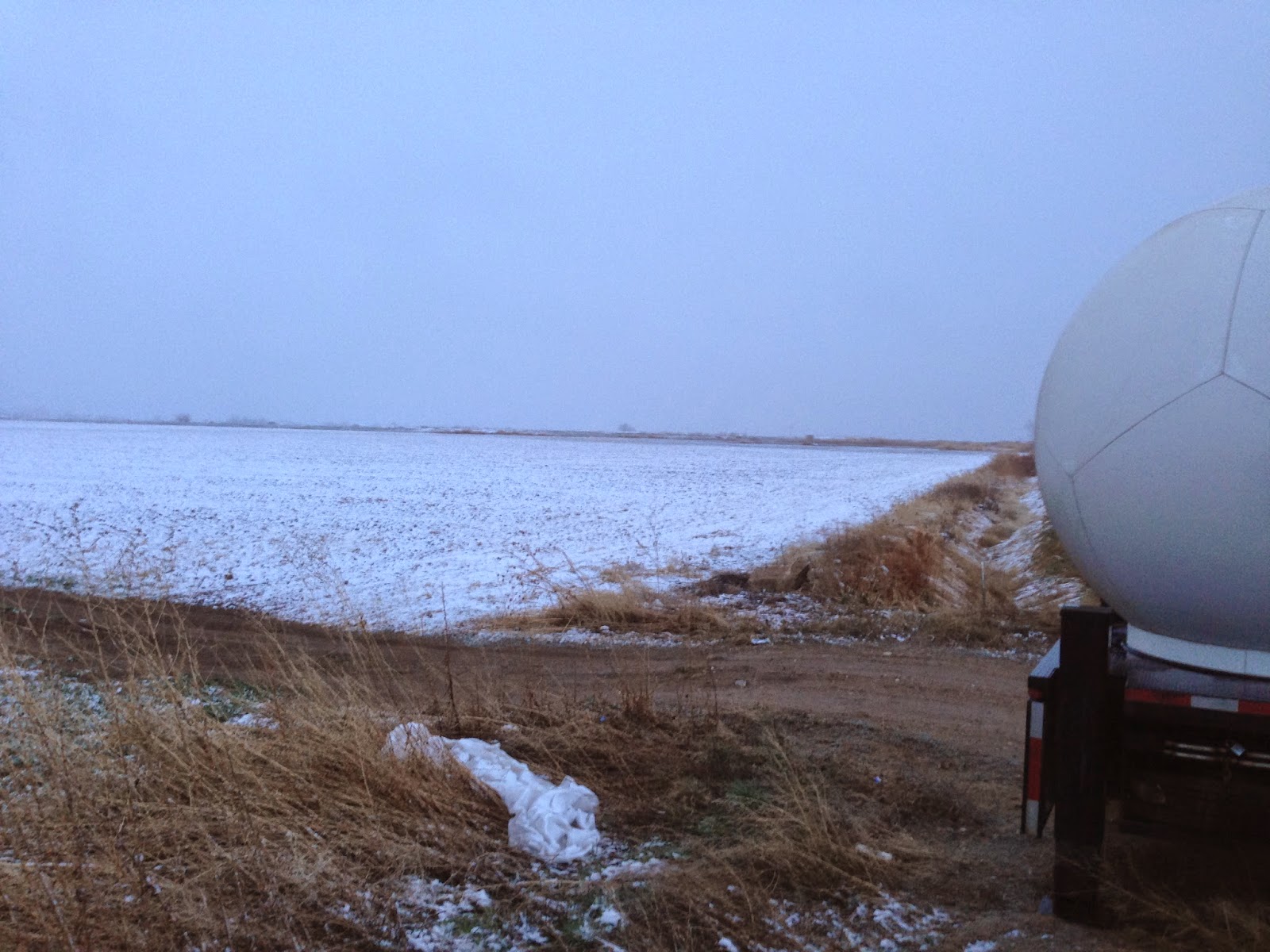The TTUKa radar team was able to collect several hours of coordinated dual-Doppler data during the snow that fell during the afternoon / evening of 2 April 2015. From the perspective of TTUKa2 looking south west:
Between approximately 20:20 UTC on 2 April and 04:00 UTC on 3 April, we collected 4 hours of dual-Doppler sectors, 30 min of which was a high temporal resolution 10 degree sector at elevation angle corresponding to the 100 m supersite level. Outside of that 30 min period, the dual-Doppler sectors had a revisit time of about 22 seconds for the entire volume. We also did a dual-Doppler stare at 100 m over the supersite which ended up lasting about 1.5 hours. Finally, we included 30 min of virtual towers using the intersection point over the supersite and the fast scan speed resulting in a revisit time of approximately 3 seconds for a dual-Doppler profile.
Within this dataset we noticed many interesting features. First, the single-Doppler radial velocity field from TTUKa2 at the lower tilts (1.5 degrees in particular) displayed a "streaked" structure. This structure was less defined at higher tilts in the volume such that it was barely noticeable at the 3.0 degree tilt.
In addition to the detailed structure of the wind during the more uniform flow, there were also several wind ramps that disrupted the structure. One such ramp (or surge) contained broad circulations on the leading edge that can be seen rotating over the general area of the tower. An animation of the ramp can be seen here: Wind Ramp. A very small wake from the BAO tower also was evident during several of these ramps. An example can be seen here: BAO Tower Wake . In both animations, the BAO tower is identified as the magenta "+" in the middle of the sector. The wake can be seen as slightly reduced wind speed values extending south of the tower for a short period. This wake wasn't obvious all the time and may be related to the particular wind direction of the surge in wind speed. The above links don't quite do the animations justice, so if you would like to see a somewhat higher resolution version, feel free to email me (scott.gunter@ttu.edu).
We will continue to monitor to the clear air data quality before concluding our participation in the data collection portion of XPIA on 7 April. I will hopefully return to daily blog posts (more frequent if conditions warrant) until then.


No comments:
Post a Comment